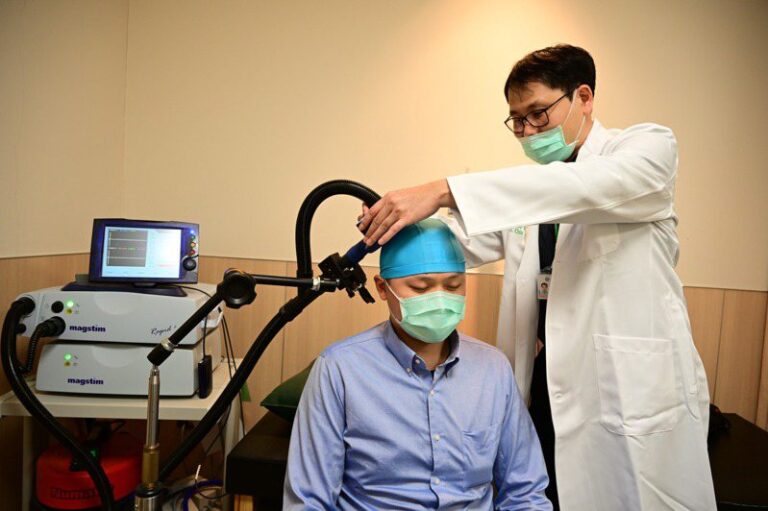
When a 51-year-old man woke up early in the morning late last year, his right limb suddenly went numb. She sought medical evaluation for infarction in the left middle cerebral artery territory. Although he survived, his mental condition was significantly affected by the weakness of his right hand. It was recommended to use “repetitive transcranial magnetic stimulation” to boost brain activity, which not only gradually restored the muscle strength of the affected area, but also regained confidence in life.
Qiu Xinzhao, a neurologist at Azhou University Hospital, said that when the patients arrived at the hospital, their blood pressure was up to 200 mmHg, and MRI found cerebral vascular infarction. However, emergency injection of blood clot-dissolving drugs can restore the smooth flow of brain blood vessels. and can be avoidedthe strokesSymptoms continue to worsen, but brain cells that have been destroyed due to ischemia cannot completely return to their original state. Rehabilitation treatment should be started simultaneously to improve self-care ability.
He said that because the patient’s right hand could never make steady grasping and holding movements, he was depressed and had no motivation to actively recover. After evaluation, it was recommended to receive non-invasive “repetitive transcranial magnetic stimulation” treatment, with the main goal of stimulating the right side of the brain. After one week of treatment, the patient’s right limb strength gradually recovered, a smile appeared on his face, and his will to recover became more positive. Finally, he was able to walk on his own, which made the patient’s wife very happy.
Qiu Xinzhao said that “repetitive extracranial magnetic stimulation” is a technology that does not invade the human body and can stimulate specific parts of the brain at the same time. The principle is to use electromagnetic effects to place insulating coils on specific parts of the scalp. When a strong current passes through the coil, a small electromagnetic pulse will be generated, which will pass through the scalp and reach the corresponding brain area. Through continuous and regular repetitive stimulation, it can enhance or inhibit the function of specific areas of the brain.
Magnetic waves can pass through the skull through the position of the brain, and are transmitted about 3 centimeters under the skin to induce induction current stimulation, thereby disrupting the activity of the healthy part of the brain or the affected part of the brain. Activity is encouraged. Rebuilding brain circuits, and achieving brain improvement. Effects on recovery of arm and leg movements, swallowing, language and cognitive functions after stroke.
He said research shows that a total of 10 sessions of transcranial magnetic stimulation for two weeks along with rehabilitation can improve the sequelae of stroke. Especially in the early stages of stroke, the greater the neuroplasticity, the more significant the effect will be if the patient receives transcranial magnetic stimulation.
This therapy is also widely usedDepressionAnxiety disorders, Parkinson’s disease,Alzheimer’s diseaseand other neuronal degenerative diseases, as well as migraine, chronic pain, sleep disorders, tinnitus, etc.
However, it cannot be done if there is a cardiac pacemaker, metal implants in the skull, or a history of epilepsy. Additionally, a small number of patients may be induced to have epileptic seizures or vasodonic syncope during treatment. In this case, they can discuss it with the medical team before treatment. Communicate to reduce the risk of accidents.
Health